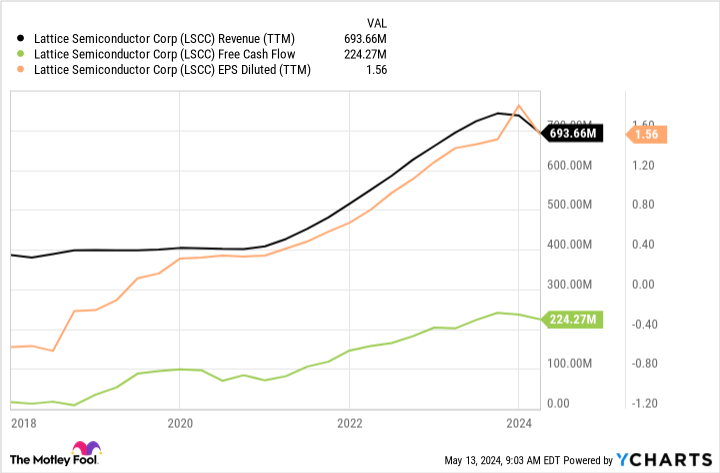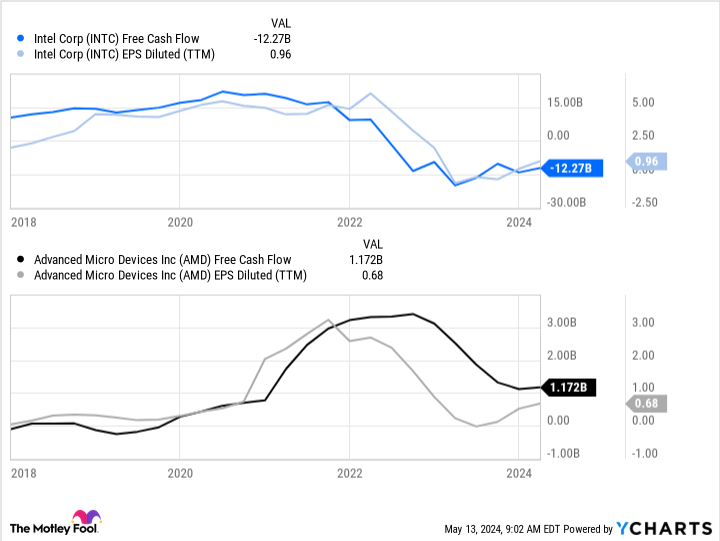1 Small Chip Stock Outperforming AMD, Intel, and Others in a Crucial Area of AI – The Motley Fool
Founded in 1993, The Motley Fool is a financial services company dedicated to making the world smarter, happier, and richer. The Motley Fool reaches millions of people every month through our premium investing solutions, free guidance and market analysis on Fool.com, top-rated podcasts, and non-profit The Motley Fool Foundation.
Founded in 1993, The Motley Fool is a financial services company dedicated to making the world smarter, happier, and richer. The Motley Fool reaches millions of people every month through our premium investing solutions, free guidance and market analysis on Fool.com, top-rated podcasts, and non-profit The Motley Fool Foundation.
You’re reading a free article with opinions that may differ from The Motley Fool’s Premium Investing Services. Become a Motley Fool member today to get instant access to our top analyst recommendations, in-depth research, investing resources, and more. Learn More
A battle is quietly brewing, and a small company called Lattice is secretly winning.
After a number of large acquisitions from chip design giant Intel in 2015 and another by AMD in 2022, I’ve written about how small chip design house Lattice Semiconductor (LSCC -2.14%) is the last FPGA pure-play company left standing.
FPGAs (field-programmable gate arrays) are a type of logic chip. They have the ability to be reprogrammed using software to allow engineers to change the FPGA’s function — even after the chip has been manufactured and put into use. This makes FPGAs different from application-specific integrated circuits (ASICs), or even many CPUs and GPUs, which are designed and pre-programmed to behave a certain way.
Lattice may be small, but it has been quietly winning a market share battle with its two larger competitors, Intel and AMD. As the semiconductor industry readies for a new growth cycle later in 2024, powered by new needs for artificial intelligence (AI), Lattice could be in an exceptional position to keep winning.
When excluding the big data center AI systems that Nvidia is producing, much of the semiconductor industry is actually still in the midst of a cyclical slump. While signs point to the new Nvidia- and big tech-fueled bull market thawing out this downturn, perhaps during the second half of 2024, Lattice just released some disappointing financials for the first quarter of 2024.
Metric
Q1 2024
% Change (YOY)
Revenue
$141 million
(24%)
GAAP earnings per share (EPS)
$0.11
(73%)
Free cash flow (FCF)
$26.1 million
(28%)
Data source: Lattice Semiconductor.
These results effectively bring Lattice’s multi-year spate of growth to an end.
Data by YCharts.
As ugly as the recent results may appear, though, Lattice is faring far better than the comparable FPGA segments at Intel and AMD. For Intel, that’s primarily Altera, the big FPGA company it acquired in 2015, and the name of which it recently resurrected with plans to eventually spin it off as a publicly traded company once more. And for AMD, that’s the “Embedded” revenue segment, acquired primarily via the megamerger with FPGA market leader Xilinx in early 2022.
Both Intel’s Altera and AMD’s Embedded segments fell by far more than Lattice’s FPGA-focused revenue did to kick off 2024. This means Lattice is scooping up FPGA chip market share at the expense of its two larger peers.
Company
Q1 2024 Revenue
YOY % Change
Intel Altera
$846 million
(46%)
AMD Embedded
$342 million
(58%)
Data source: Intel and AMD.
There’s often tremendous value in having singular focus as a business, especially when that singular focus is paired with financial discipline. While Intel and AMD have both struggled to maintain profitability during the chip industry downturn in the last year-plus (Intel much more so than AMD), Lattice has remained profitable by all counts.
Data by YCharts.
What’s Lattice’s secret? Historically, it has focused on low-end and “small” FPGAs, those with fewer logic cells that can be reprogrammed. These small FPGAs are used in things like industrial equipment and sensors, critical applications for things like factory automation and for control of many simple functionality features in modern cars.
Lattice has also been moving into mid-sized FPGAs with new product launches in recent quarters. These “bigger” FPGAs with more logic blocks are used in more complex functions, like in some parts of data centers, high-end networking and telecom equipment, and more advanced self-driving features in cars.
In recent years, in search of better financial efficiency, both Intel and AMD have sunsetted some of their small- and mid-sized FPGA product lines. This has left the door open for Lattice to expand its customer base and sell a broader range of FPGA chips to existing customers once this current industry downtrend is over.
It’s not just Lattice benefiting either. In its latest earnings call, Microchip also called out Intel and AMD’s sunsetting of mid-sized FPGAs, an area of the industry that Microchip has been making waves in.
Now, while it may make financial sense for Intel and AMD to try and tighten up their product lineups and cede some share for Lattice, this has a jointly positive effect for Lattice. Less competition means Lattice could sell more and boost its profit margins, too. And, of course, with all sorts of AI applications beginning to proliferate across multiple industries, Lattice small- and mid-sized FPGAs could be more important than ever before.
The stock does trade for a premium of nearly 60 times current-year expected EPS. However, bear in mind that includes the steep falloff in earnings in Q1 and expected earnings in the next few quarters as Lattice rallies out of the chip industry downturn. I remain a happy shareholder with an eye on this small company’s potential for higher sales and profit margins for years to come.
Nicholas Rossolillo and his clients have positions in Advanced Micro Devices, Lattice Semiconductor, Microchip Technology, and Nvidia. The Motley Fool has positions in and recommends Advanced Micro Devices and Nvidia. The Motley Fool recommends Intel and recommends the following options: long January 2025 $45 calls on Intel and short May 2024 $47 calls on Intel. The Motley Fool has a disclosure policy.
Invest better with The Motley Fool. Get stock recommendations, portfolio guidance, and more from The Motley Fool’s premium services.
Making the world smarter, happier, and richer.
© 1995 – 2024 The Motley Fool. All rights reserved.
Market data powered by Xignite and Polygon.io.
